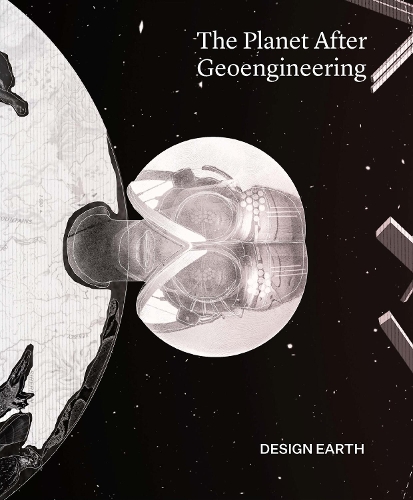
The Planet After Geoengineering
Publishing Details
The Planet After Geoengineering
By (Author) DESIGN EARTH
By (author) Rania Ghosn
By (author) El Hadi Jazairy
Actar Publishers
Actar Publishers
9th November 2021
United States
Classifications
General
Non Fiction
Physical Properties
112
Width 215mm, Height 254mm
Description
The Planet After Geoengineering is a graphic novel in five speculative fictions that imagine the worlds of climate modification technologies and their controversies.
The term geoengineering refers to technologies that counteract the effects of anthropogenic climate change by deliberately intervening in Earth systems. In the midst of a climate crisis, and with disparate views on whether planetary-scale design is the appropriate response at all, The Planet After Geoengineering employs a speculative fiction approach to think with and against geoengineering as a form of planetary management. The graphic novel makes climate engineering and its controversies visible in a series of five stories that are collectively assembled into a planetary section from the deep underground to outer space. Each geostoryPetrified Carbon, Arctic Albedo, Sky River, Sulfur Storm, and Dust Clouddepicts possible future Earths that we come to inhabit on the heels of a geoengineering intervention all while situating such promisory visions within a genealogy of climate-control projects from nineteenth-century rainmaking machines and volcanic eruptions to Cold War military plans. Such fabrications of an engineerable earth open a space to forge a new geo-politics that includes the actual Earth its dimensions, processes, and lifeforms as constitutive of design and the planet.
The Planet After Geoengineering book is the graphic novel companion to DESIGN EARTHs eponymous project at the Venice Biennale of Architecture, curated by Hashim Sarkis.
With essays by Kathryn Yusoff, Benjamin Bratton and Holly Jean Buck.
Reviews
"Geoengineering too needs its promissory and geopolitical intent creatively explored if we are to move from exceptionalism to more participative forms of governance. The arts and humanities may well offer particular critical investigations into these technologies. Artists, designers, writers, and theorists in the Cold War period, working between the specter of nuclear catastrophe and utopian architectures for planetary survival, offered both playful and critical geopolitical accounts of imaginaries of atmospheric control (such as Buckminister Fullers's 1960s "Dome over New York"). Such design begs a model of knowledge making that is both critical and creative in its exploration of the norms and structures of knowledge-making practices in geoengineering research. By engaging publics with the processes, technics, and imaginaries of geoengineering, the arts open up questions about the making of models and worlds. In this sense, cultural experiments in narrating geoengineering involves a form of geontologising: that is, the reconstitution of the earth as a dynamic world object. --Kathryn Yusoff, The Geoengine
Author Bio
DESIGN EARTH is an architectural research practice founded by Rania Ghosn and El Hadi Jazairy. Their work engages architectural representation as a speculative medium for making visible and public the geographies of the climate crisis. Their work is exhibited internationally, including at Venice Biennale, Milano Triennale, San Francisco Museum of Modern Art; Matadero Madrid; Sursock Museum, Beirut; and Times Museum, Guangzhou; and was collected by New York Museum of Modern Art. Ghosn and Jazairy are educators; she is Associate Professor of Architecture and Urbanism at the Massachusetts Institute of Technology; he is Associate Professor of Architecture at the University of Michigan. They are winners of the Architectural League Prize, ACSA Faculty Design Awards, and other architectural press honors. They both hold Doctor of Design degrees from Harvard Graduate School of Design, where they were founding editors of the journal New Geographies. Ghosn and Jazairy are authors of Geographies of Trash and Geostories: Another Architecture of the Environment.
